13+ Sample Notary Acknowledgement
-
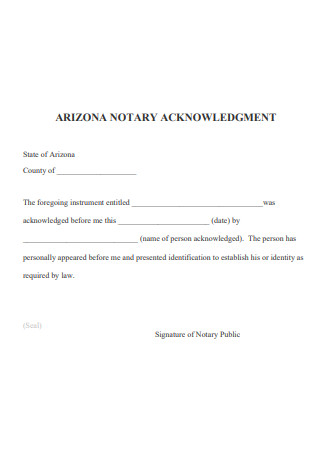
Notary Acknowledgement Template
download now -
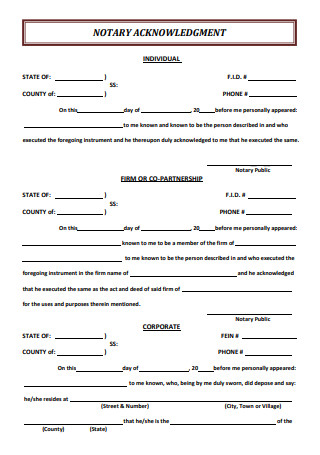
Sample Notary Acknowledgement
download now -
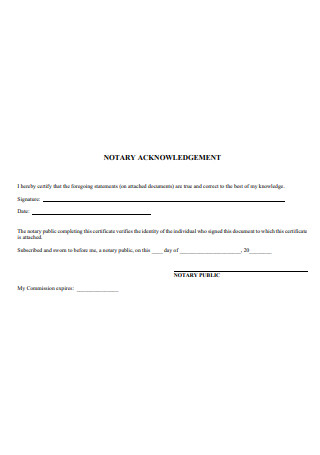
Formal Notary Acknowledgement
download now -
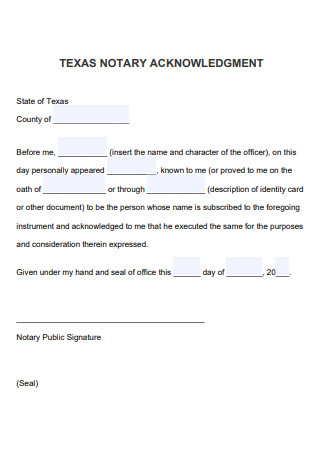
Notary Acknowledgement Example
download now -
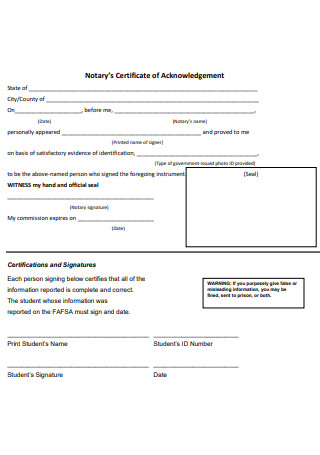
Notary Certificate of Acknowledgement
download now -
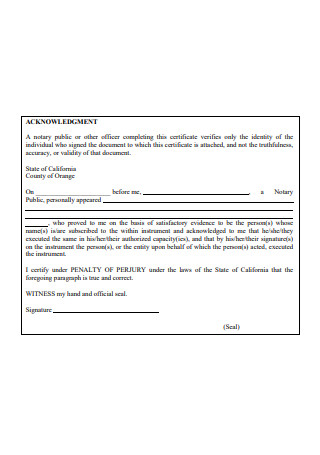
Notary Acknowledgement Format
download now -
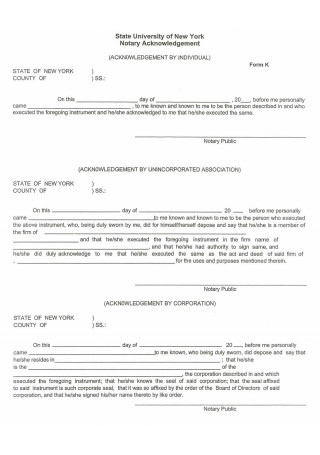
University Notary Acknowledgement
download now -
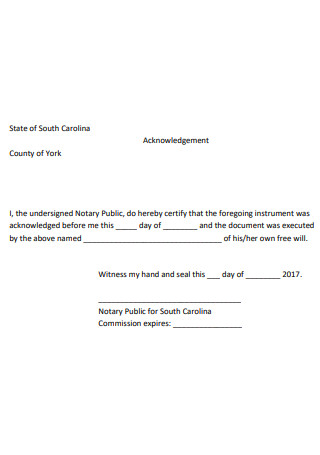
Simple Notary Acknowledgement
download now -
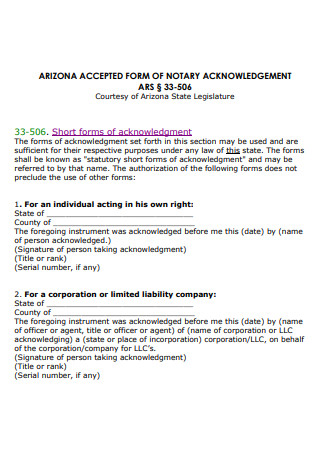
Notary Acknowledgement Form
download now -
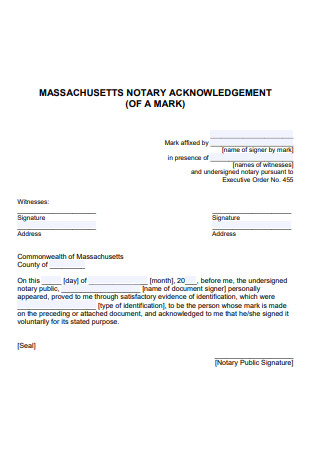
Printable Notary Acknowledgement
download now -
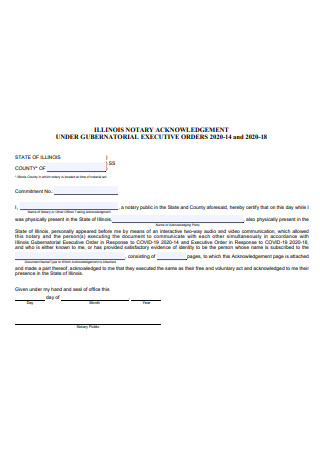
Basic Notary Acknowledgement
download now -
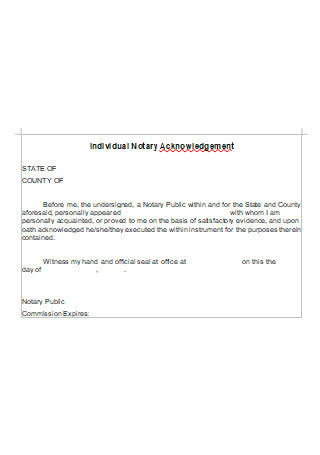
Individual Notary Acknowledgement
download now -
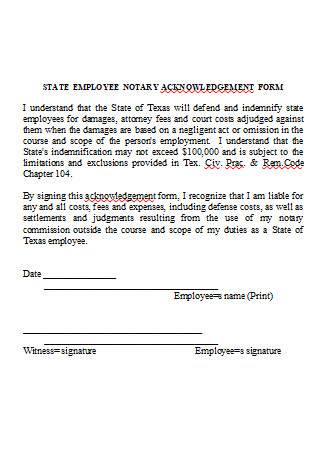
Employee Notary Acknowledgement
download now -
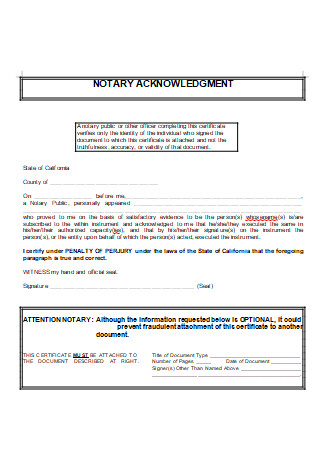
Notary Acknowledgement in DOC
download now
FREE Notary Acknowledgement s to Download
13+ Sample Notary Acknowledgement
What is a Notary Acknowledgement?
Why is Notarization Important?
What are the Contents of a Notary Acknowledgement?
How to write a Notary Acknowledgement
FAQs
What is a notary public?
How is an Acknowledgement completed?
Does getting a document notarized cost a lot of money?
What is the difference between a Notary Acknowledgement and a Jurat?
Is there an expiration to a Notarized Document?
Is my notarized document still valid even if the Notary Officer dies?
What is a Notary Acknowledgement?
A Notary Acknowledgement is a type of important document that serves as certification that a certain individual has already and legitimately signed a form. This also certifies that the particular document has signed the form willingly, and not under duress. This document is usually made by the notary public. This document is highly recommended for all kinds of important papers such as contracts, bills of sale, last will and testaments, medical documents, and more. Depending on the location and its procedures, the notary public will be required to view a person’s government ID in order to verify his/her identity.
Why is Notarization Important?
Getting a document notarized will serve as a legally binding agreement between parties. Notarization is essential since it converts what was once a private statement between the parties involved into a public document. The terms written in the notarized document can and will serve as enforceable and tangible evidence should they enter into a dispute, because getting a document notarized will make it a strong proof of the legitimacy and authenticity of the said document. Legal papers and contracts are also protected from fraud if they are notarized. However, it is also important to remember that the document being notarized can only be considered authentic if it is done before the presence of a notary public or the presence of an officer duly authorized by the law of the country.
What are the Contents of a Notary Acknowledgement?
A Notary Acknowledgement can be made simple or detailed, depending on where you live. Here are the contents you would typically see inside a Notary Acknowledgement:
How to write a Notary Acknowledgement
Fortunately, the process of creating a Notary Acknowledgement form is not too complicated. You can have a look in this guide in order to create one of your own should you happen to need it now, or for safekeeping, if you need it in the near future.
Step 1. Create the document heading.
Begin creating the notary acknowledgement by writing the document heading. In this part, you can simply state the words “Notary Acknowledgement” alone as a heading, or you can write the state where you live (e.g. Texas Notary Agreement, Florida Notary Agreement). You can also customize the heading by stating here the name of the establishment or facility concerned (e.g. Texas Southern University Notary Agreement, State University of New York Notary Agreement).
Step 2. Create the document body.
This is where you write the main statement of the Notary Acknowledgement. You can include here your place if you haven’t done so already in the heading. The contents of the document body are the statement itself, containing some blank spaces to be filled with the names of the individuals involved, a description of the documents involved, and the date when the said acknowledgement is witnessed. This part can be written once or multiple times, depending on the number of parties that are involved.
Step 3. Create the concluding part.
No formal type of document, such as a sworn statement, can be completed without creating the area reserved for signatures, and in some cases, spaces for stamps and/or dry seals to be applied, further confirming that the private document is now transformed into a public instrument and the terms agreed can now be enforced. The lack of this area means that the document has no power to be presented as tangible court evidence should it be needed. Multiple signatures of the same individual can sometimes be required by the attorney, so it should be important that enough space is left.
Step 4. Verify and proofread the document.
After creating the notary acknowledgement, it is also important that you give it another look to verify for errors, inconsistencies in the statement, or things that could have been totally left out. As this document will be legally binding once it is signed and sealed, it is important that it is also properly and formally worded, to avoid any confusion that may arise. Once you are absolutely sure about it, then the notary acknowledgement can now be written with details, along with the necessary signatures and stamps.
FAQs
What is a notary public?
A notary public is defined as an individual, usually appointed by the state or region, with certification to notarize documents. He/she is also appointed to help deter fraudulent acts In some places, only lawyers are allowed to be a notary public. The responsibilities of being a notary public can also include: taking any affidavits, providing notice of foreign drafts, verifying the identity of the individual or individuals who will sign the document, and also making them aware of the contents of the document or transaction that they are signing.
How is an Acknowledgement completed?
Does getting a document notarized cost a lot of money?
This heavily depends on the type of document that you want to be notarized, the place where you would like the document to be notarized, and the notary public that you choose. The average cost of getting a document notarized in most places ranges from 15-20 USD. Different areas may also have notary officers around, such as (but not limited to): Banks, Registry Offices, State University campuses, Printing/Shipping stores, Courthouses, and nowadays, even notary services can be done online, at the comfort of your own home. If you’re lucky, the bank near you that offers notary services can even do it to you for free.
What is the difference between a Notary Acknowledgement and a Jurat?
The main difference between the two lies in their purpose. The purpose of a Notary Acknowledgement is for a verified signer to declare to the authorized notary public that he/she has signed the document willingly, and not under duress. The purpose of a Jurat is for the signer to give his/her affirmation to the notary public that the contents of the signed document are absolutely true. In some places, notaries public are not permitted to choose which document the signer should sign. He/she can only ask that particular party which document he/she prefers to sign. As a Notary Acknowledgement and a Jurat have significantly different purposes, different wordings that are appropriate to each document must also be used in order to avoid confusion. A Notary Acknowledgement certificate can never be used as a Jurat, nor a Jurat can be used as Notary Acknowledgement certificate.
Is there an expiration to a Notarized Document?
For the notarized document itself, it typically does not have an expiration date. For the notary public, as long as his/her commission date stamped in the document is still valid, the document can be considered valid as well. However, should it be found out that the notarizing office/notary public’s commission has already expired on/before the date that a document was notarized, then the notarized document will already be considered invalid. Some recipients of a notarized document will also reject it if the commission expiration date of the officer is not present. The expiration also depends on the document itself, notarized or not. For example, in a notarized 3 year lease document, after the period expires, the document is now invalid even if the commission date is still valid. But if the notarization process is faulty, defective, or compromised, the notarized document loses its power and is nullified, even if the commission date stamped on the document is still valid.
Is my notarized document still valid even if the Notary Officer dies?
Yes, it still is. A notarized document is still fully effective even if the officer who notarized it has died. Since they are self-proving documents, when presented in front of a court, they are still accepted at face value. However, during a court hearing, should the notary be needed to appear in court to serve as a witness but is already deceased, his/her notary journal can serve as transaction records, but only if the deceased notary’s records are properly delivered to the corresponding authority.
Getting your document notarized is very important, as it ensures that fraud is prevented and any malicious intent of breaking an agreement is quickly deterred. Having a Notary Acknowledgement also helps, as it certifies before the notary public that all documents that were signed were done so in their own will, and not under threat and coercion. If you find it difficult to create a Notary Acknowledgement of your own, this article has examples above that you can download and use, or just for you to have a look and serve as a guide.
